As the photography world awaits the release of the Canon EOS R5, many photographers are wondering how it will compare to the 5D Mark IV. After all, these two cameras are in different price ranges and have different capabilities. In this blog post, we will take a comprehensive look at both cameras and compare their features side by side. We will also discuss which camera might be right for you, depending on your needs as a photographer.
What Is Canon EOS R5?
Its newly developed 45 MP Dual Pixel CMOS sensor and the DIGIC X processor set it apart from other cameras. Its autofocus system uses advanced algorithms to track subjects accurately, even in low light conditions. The image stabilization technology helps reduce blurriness and shake when shooting handheld or with long lenses. Video shooters can take advantage of 8K 30p recording as well as 4K 60p recording with 10-bit color depth. Additionally, Canon EOS R5 offers dual card slots for secure storage and Wi-Fi/Bluetooth connectivity.
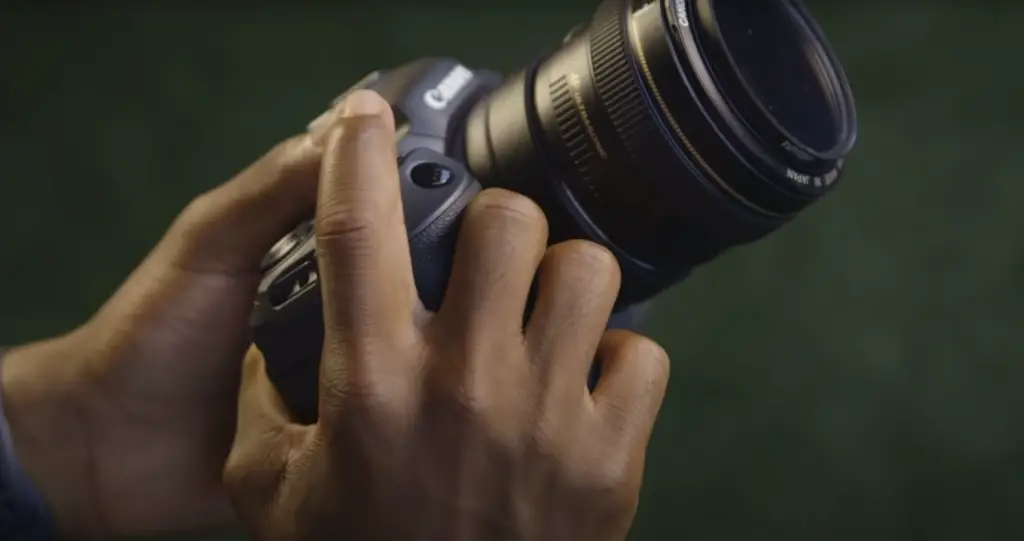
What Is Canon EOS 5D Mark IV?
It has 30.4 MP resolution and a 61-point autofocus system. Its 4K video recording capability allows users to capture high-quality videos with ease. Additionally, it features dual pixel CMOS AF technology, which helps improve its focus tracking performance when shooting videos or stills. [1]
Canon EOS R5 vs. Canon EOS 5D Mark IV: Features
Sensor
The Canon EOS R5 features a newly developed 35mm full-frame CMOS sensor with an effective resolution of 45 megapixels and Dual Pixel CMOS autofocus. The 5D Mark IV uses the same 22.3mp full frame CMOS sensor as its predecessor, the 5D Mark III.
Image Processor
The EOS R5 is equipped with the brand new Digic X image processor, letting you shoot high speed video up to 20 fps with AF/AE tracking, as well as 8K RAW recording at 30p/25p/24p. The 5D Mark IV uses a DIGIC 6+ image processor, which captures still images at 7fps with AF/AE tracking. It also records 4K video footage at 30p/25p/24p.
Autofocus
The EOS R5 features a Dual Pixel CMOS AF system with 5,940 selectable AF points and 100% coverage of the sensor area. This provides lightning-fast autofocus performance and enhanced subject tracking for stills as well as movies. The 5D Mark IV uses Canon’s 61-point High Density Reticular AF II system which offers excellent accuracy and precision in all lighting conditions.
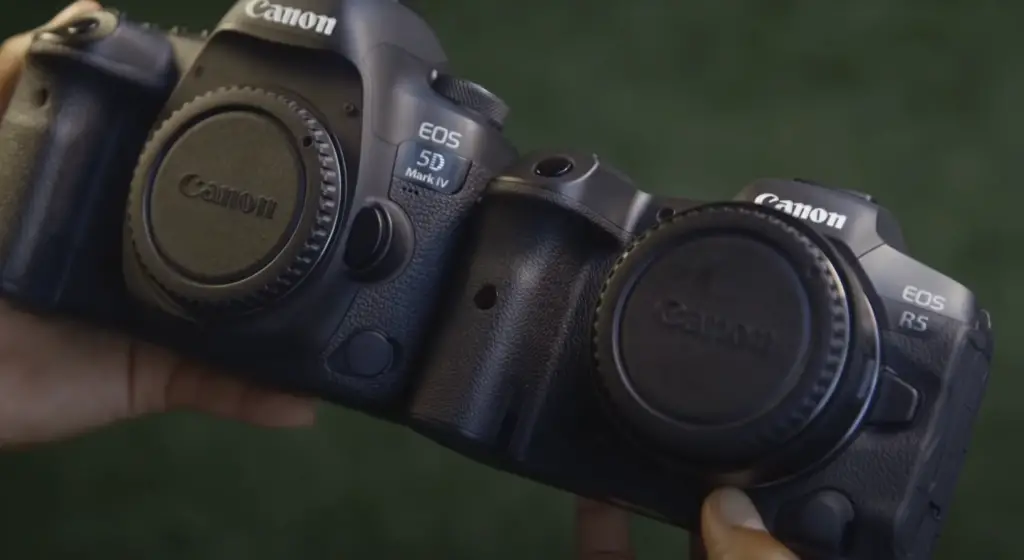
Video Capability
One of the major advantages of the EOS R5 is its 8K RAW video recording capability at up to 30p/25p/24p. It also supports 4K video recording at 120fps for smooth slow motion effects. The 5D Mark IV however, supports 4K recording at 30p/25p/24p with 8-bit color depth and a maximum bit rate of 120Mbps. [2]
Connectivity
The EOS R5 supports built-in Wi-Fi, NFC, Bluetooth, and even a USB Type-C port for data transfer and charging. The 5D Mark IV uses an older USB 2.0 port for image transferring and tethering but lacks Wi-Fi and Bluetooth connectivity.
Image processor
The EOS R5 offers an impressive 45 Megapixel resolution and high-speed continuous shooting up to 20 fps with AF/AE tracking.
The 5D Mark IV uses a DIGIC 6+ image processor which provides excellent performance but falls short of the features offered by the R5.
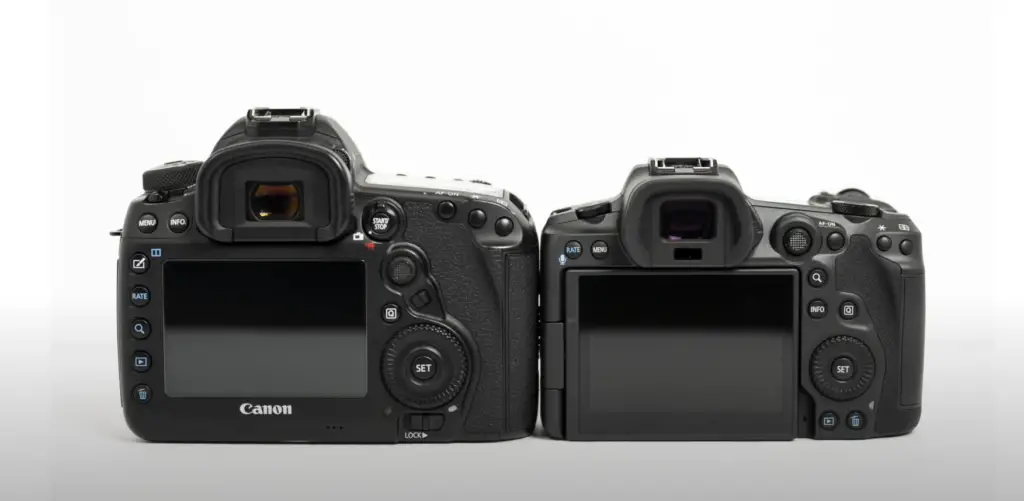
ISO range
The EOS R5 offers an ISO range of 100 – 51,200 (expandable to 204,800) for capturing sharp images in low light conditions. The 5D Mark IV features a native ISO range of 100-25600 (expandable to 102400).
Weather Sealing
Both cameras feature weather sealing for protection from dust and moisture, making them suitable for shooting in challenging environments.
Display
The EOS R5 has a 3.2” fully articulating touch screen with 2,100K dots resolution and a 0.76x magnification viewfinder. On the other hand, the 5D Mark IV comes with a fixed 3.2” LCD monitor with 1,620K dots resolution and a 0.71x magnification viewfinder. [3]
Price
The Canon EOS R5 is priced at $3,899 while the 5D Mark IV retails for around $2,499. Overall, the Canon EOS R5 offers an impressive set of features that make it well suited for professional photographers and videographers. It’s more expensive than the 5D Mark IV but provides higher resolution images and better video performance.
Metering zones
The EOS R5 has a total of 384 metering zones while the 5D Mark IV has 63. This helps provide more accurate exposure and better low light performance for both stills and video.
Viewfinder
The EOS R5 has a 0.76x magnification viewfinder with 100% coverage and a 21mm eye point. The 5D Mark IV offers a 0.71x magnification viewfinder with 97% coverage and an 18mm eye point.
Memory card slot
The EOS R5 has dual memory card slots for storing large files, one of which supports the faster UHS-II format. The 5D Mark IV has a single slot that supports only UHS-I cards.
Max burst
The EOS R5 has a maximum burst speed of 20fps while the 5D Mark IV can capture up to 7fps.
Size
The EOS R5 is slightly larger than the 5D Mark IV, measuring 138 x 98.3 x 88.4mm compared to 150.7 x 116.4 x 75.9mm for the 5D Mark IV.
Weight
The EOS R5 weighs 738g while the 5D Mark IV is lighter at 890g.
Battery Life
The EOS R5 offers an impressive battery life of up to 350 shots per charge while the 5D Mark IV can last up to 900 shots per charge with its LP-E6N battery pack.
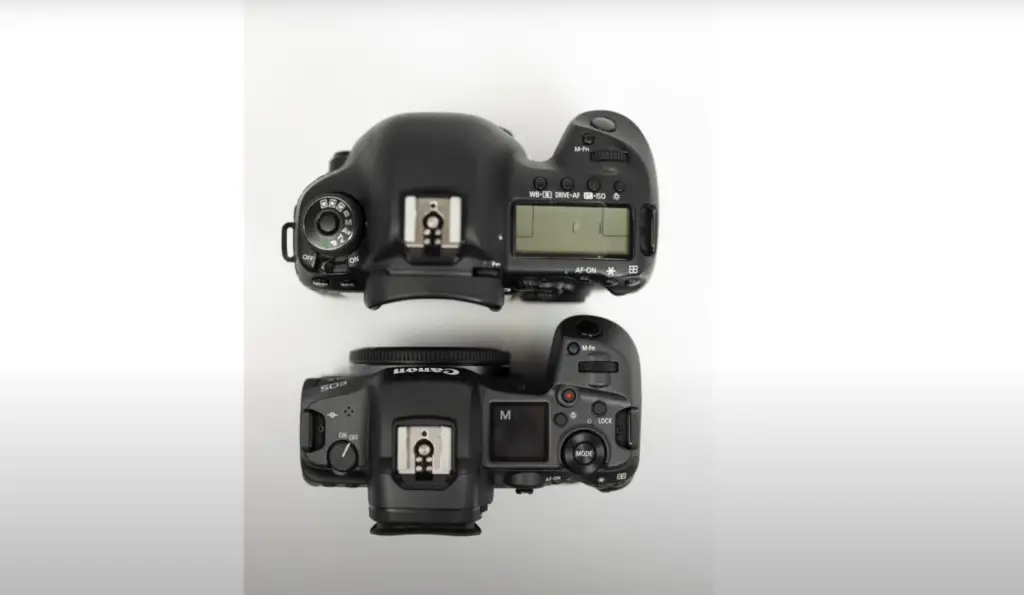
Canon EOS R5 vs. Canon EOS 5D Mark IV: Build And Handling
The Canon EOS R5 is a newer and more technologically advanced camera than the 5D Mark IV. The body of the R5 is made from magnesium alloy, making it lighter and stronger than before. It has several customizable buttons for quick access to favorite settings and features. Additionally, the ergonomics have been improved for better handling.
The 5D Mark IV body is constructed from polycarbonate-reinforced titanium alloy making it slightly heavier but still very durable. It has fewer customisable buttons which take some time to get used to but overall its design makes it comfortable to use. [4]
Canon EOS R5 vs. Canon EOS 5D Mark IV: Lab Results
In terms of lab results, the Canon EOS R5 beats out the 5D Mark IV in almost every category. It has a higher resolution sensor with 45.0MP compared to the 30.4MP of the 5D Mark IV and it can shoot up to 8K RAW video or 4K at 120fps compared to just 4K 60fps on the 5D Mark IV. The autofocus system is much more advanced on the R5 as well with 693 phase-detect autofocus points compared to only 61 for the 5D Mark IV.
The low light performance on both cameras is good but again, the Canon EOS R5 outperforms here due to its improved ISO range – up to 102400 compared to just 51200 on the 5D Mark IV. The burst rate is also much better on the R5 with 20 fps compared to 7fps for the 5D Mark IV.
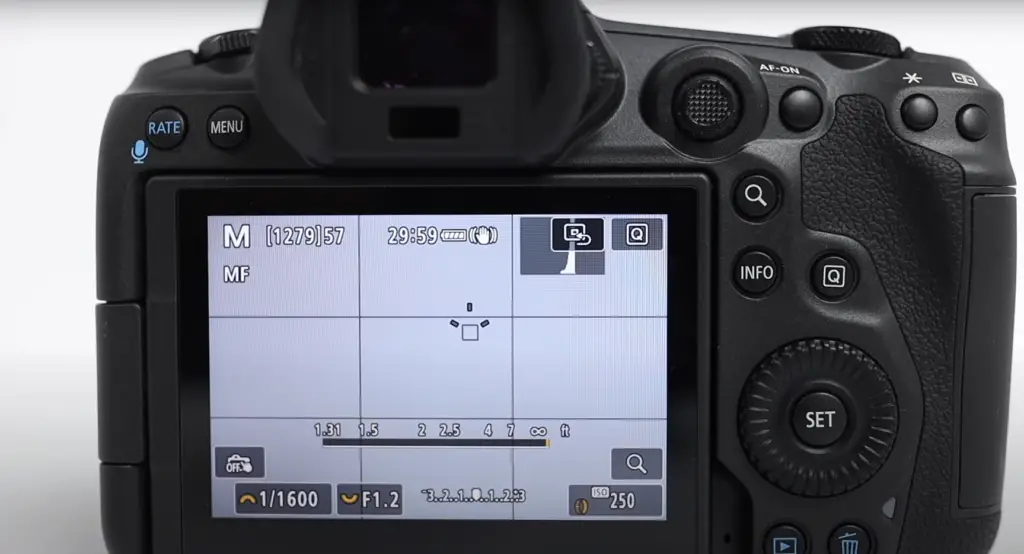
Canon EOS R5 vs. Canon EOS 5D Mark IV: Portability
The Canon EOS R5 is considerably more portable than the 5D Mark IV. The body and lens together weigh just 898g compared to 890g for the 5D Mark IV. It also has a smaller form factor making it easier to carry around with you.
When it comes to battery life, both cameras offer good performance but again, the R5 edges out its predecessor – lasting up to 850 shots per charge compared to 700 on the 5D Mark IV.
Canon EOS R5 vs. Canon EOS 5D Mark IV: Ergonomics & Comfort
The Canon EOS R5 has a redesigned grip making it more comfortable to use than the 5D Mark IV. The control dials are also more intuitive and easier to find without having to take your eyes off the viewfinder. Additionally, there’s an OLED display on top of the camera which allows you to quickly access important settings without having to go into menus.
The 5D Mark IV is still comfortable to use but its controls can take some time getting used to before you feel like you’re fully in control.
Canon EOS R5 vs. Canon EOS 5D Mark IV: Ease of Use
It has an intuitive touchscreen interface that makes navigating menus and changing settings a breeze. Additionally, there are dedicated buttons for important features like ISO, shutter speed, and white balance which can be customized to your liking.
The 5D Mark IV user interface isn’t bad but it does take some time getting used to before you start feeling comfortable with it. [5]
Canon EOS R5 vs. Canon EOS 5D Mark IV: Pros And Cons
The Canon EOS R5 is a great choice for photographers who are looking for a powerful camera that is also easier to use than the 5D Mark IV. It offers improved ergonomics, excellent low light performance, and a more advanced autofocus system with faster burst rates.
On the downside, it comes with a higher price tag than the 5D Mark IV and it doesn’t have as many customisable buttons for quick access to settings.
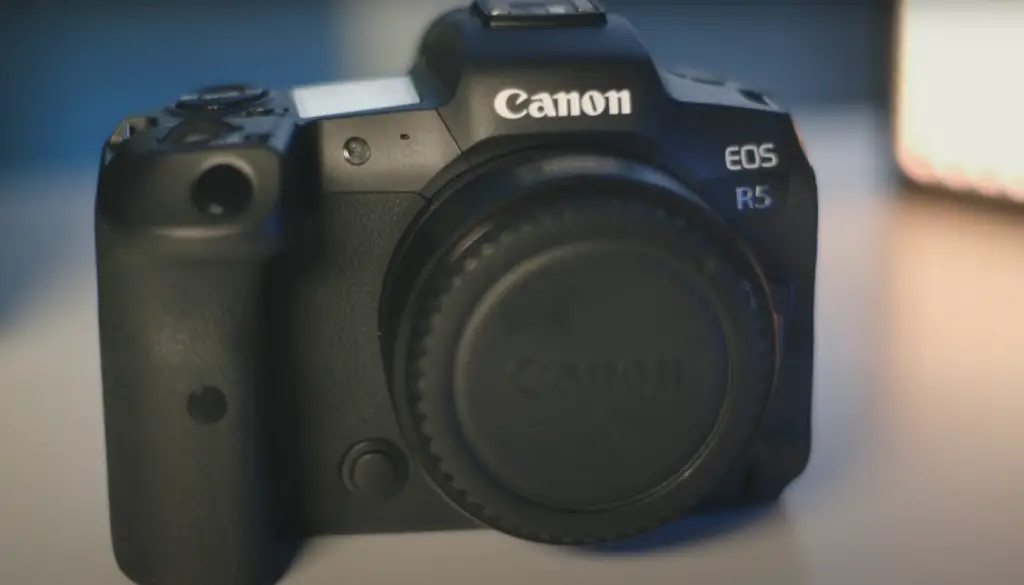
The Canon EOS 5D Mark IV is still an excellent camera but its age means that it can’t compete with the newer R5 in terms of performance and features. Its lower price makes it attractive to those on a budget but its user interface may be more difficult for some to get used to.
However, if you’re on a budget or prefer the interface of the 5D Mark IV, then it may be worth considering it as an alternative.
Ultimately, both cameras offer excellent performance and features and your decision should depend on what type of photography you’re doing and how much you’re willing to spend. No matter which one you choose though, you can rest assured that you will be getting a great camera.
Alternatives to Canon EOS R5 and Canon EOS 5D Mark IV
When it comes to choosing a DSLR camera, many photographers have narrowed down their options to between the Canon EOS R5 and 5D Mark IV. While both cameras offer powerful features and quality performance, they also come with their own unique benefits as well as drawbacks. So how can you make an informed decision when comparing these two popular models?
Fortunately, there are plenty of alternatives on the market that could be better suited for certain types of photography or budgets. For example, for those who want a step up from entry level DSLRs without spending too much money, the Canon EOS 80D could be a great choice. It offers similar functionality to the EOS R5 in terms of video recording capabilities and resolution but at a much lower price point. For those who want a full-frame camera but don’t need the highest resolution, the Canon EOS 6D Mark II could be a great option. It offers an impressive 24 megapixel sensor and records video in Full HD resolution at up to 60 frames per second.
For photographers looking for something even more powerful than the EOS R5 or 5D Mark IV, there are several options available such as the Sony A7R III and Nikon D850. The A7R III is a mirrorless digital camera that features an ultra-high resolution 42 megapixel full frame sensor, 4K video recording capabilities, and a host of other features that make it ideal for landscape and wildlife photography.

Canon EOS R5 vs. Canon EOS 5D Mark IV: How to Maintain?
Making the right choice when it comes to investing in a digital camera can be difficult, and getting the most out of your purchase requires proper maintenance. Compare and contrast Canon EOS R5 vs. 5D Mark IV with regards to their maintenance attributes:
- Lens Cleaning: The EOS R5 features a dust-proof and drip-proof design, making it easier to clean compared to the 5D Mark IV’s weather-resistant body. The EF/EF-S lenses used on both cameras are protected from dust and moisture thanks to fluorine coating technology which reduces sticking particles when wiping off lens elements.
- Battery Care: Both Canon EOS R5 and 5D Mark IV use LP-E6N and LP-E6 batteries respectively. It is recommended to keep these in the camera when not in use for optimal performance, and spare batteries should be stored at room temperature. Additionally, store them separately away from metal objects such as keys or coins as they can cause a short circuit.
- Sensor Cleaning: With Canon’s advanced self-cleaning sensor system, both EOS R5 and 5D Mark IV offer effective dust reduction on their image sensors. However, it is still important to occasionally manually clean the sensor with a cleaning kit. Use an air blower to remove loose dust particles from the lens mount area before wiping off any moisture or oils with a microfiber cloth dampened with alcohol. [6]
FAQ
Is R5 better than 5D Mark IV?
However, the 5D Mark IV still has its strengths with full frame sensors, dual pixel autofocus and WiFi/NFC connectivity features. Ultimately, it comes down to personal preference as both cameras have their own advantages depending on the type of photography you do.
What is Canon 5D Mark IV best for?
The Canon 5D Mark IV is best for photographers who need a reliable, full-frame camera that can handle fast action and intense shooting conditions. With its 61-point AF system, dual pixel autofocus and 7 fps continuous shooting speed, the 5D Mark IV is a great choice for wildlife photography, sports photography and other high intensity scenarios.
Is the Canon 5D Mark IV a professional camera?
Yes, the Canon 5D Mark IV is considered a professional camera. It features a full frame CMOS image sensor, built-in WiFi/NFC connectivity and plenty of other features that make it an ideal choice for professionals. With its 61-point autofocus system and 7 fps continuous shooting speed, the 5D Mark IV can handle any situation with ease.
Is the Canon R5 good for night photography?
Yes, the Canon R5 is a great choice for night photography. With its 45 megapixel full-frame sensor and 8K video capabilities, the R5 offers unparalleled image quality in low light situations. It also has an autofocus system with up to 525 points of focus, allowing you to pinpoint your subject without any hassle. The high ISO performance of the camera makes it perfect for capturing astrophotography as well.
Is the Canon R5 discontinued?
No, the Canon R5 is not discontinued. It is still a popular choice for many photographers and videographers and remains in production. The camera has been updated with new features such as an 8K video capability and improved autofocus system, making it even more attractive to potential buyers.
What lenses are compatible with the Canon R5?
The R5 is compatible with most EF-mount lenses from Canon and third-party manufacturers, including wide-angle zooms, telephoto zooms, prime lenses and specialty lenses. Additionally, you can use adapted manual focus lenses or mount an adapter to use other types of lens mounts like PL or B4 on your camera. This makes the R5 a great choice for any photographer needing versatility in their lens lineup.
Is the Canon 5D Mark IV good for beginners?
Additionally, the camera can be used in a variety of shooting scenarios as well as with a range of lenses from both Canon and third-party manufacturers. This makes the 5D Mark IV an ideal choice for any beginner looking to take their photography to the next level.
Can I use my existing lenses on the R5?
Yes, you can use your existing lenses on the R5 by using an adapter or extension tubes. You may also want to consider investing in EF-mount lenses if you don’t already own any compatible lenses. This will allow you to take advantage of all the features the R5 has to offer, such as its 45 megapixel full-frame sensor and 8K video capabilities.
Which camera is better for outdoor photography?
For outdoor photography, both the Canon EOS R5 and 5D Mark IV are great options. The R5 offers higher resolution images with its 45 megapixel full-frame sensor, while the 5D Mark IV offers more flexibility with its dual pixel autofocus and WiFi/NFC connectivity features. Additionally, both cameras have weather sealing so they can be used in wet or dusty conditions without worry. Ultimately, it comes down to personal preference when deciding which camera is best for you.
Do I need a special computer to process RAW images?
Yes, you will need a computer with powerful enough hardware and software to be able to process RAW images. Most modern computers should have no issue handling the files from either camera, but if you are unsure it is best to check first before making any purchases. Additionally, some editing programs may require more powerful hardware than others so make sure to research this beforehand as well.
Useful Video: Canon R5 vs Canon 5D Mark IV – SANDMARC Camera Comparison
Conclusion
The Canon EOS R5 and the 5D Mark IV are both excellent cameras, each with its own strengths and weaknesses. While the 5D Mark IV is a tried and true model with many satisfied users, the EOS R5 is the newer model that offers superior image quality, autofocus performance, video recording capabilities and more.
Ultimately, whether you choose the EOS R5 or 5D Mark IV will depend on your specific needs. If you’re looking for something to take high-quality photos in different environments with superior autofocus capability along with 4K video recording features then you may be better off getting an EOS R5. However, if you don’t mind sacrificing some of these features in favor of a more budget friendly price tag, then the 5D Mark IV may be better for you. No matter which one you choose, both cameras are sure to serve you well and provide you with some amazing photos and videos.
Good luck on your photography journey! May your shots always come out perfect!
References
- https://digital-photography-school.com/canon-eos-r5-vs-canon-5d-mark-iv/
- https://versus.com/en/canon-eos-5d-mark-iv-vs-canon-eos-r5
- https://cameradecision.com/compare/Canon-EOS-R5-vs-Canon-EOS-5D-Mark-IV
- https://snapshot.canon-asia.com/in/article/eng/9-reasons-to-switch-to-eos-r5-from-eos-5d-mark-iv
- https://www.imaging-resource.com/cameras/canon/5d-mark-iv/vs/canon/r5/
- https://www.apotelyt.com/compare-camera/canon-5d-mark-iv-vs-canon-r5





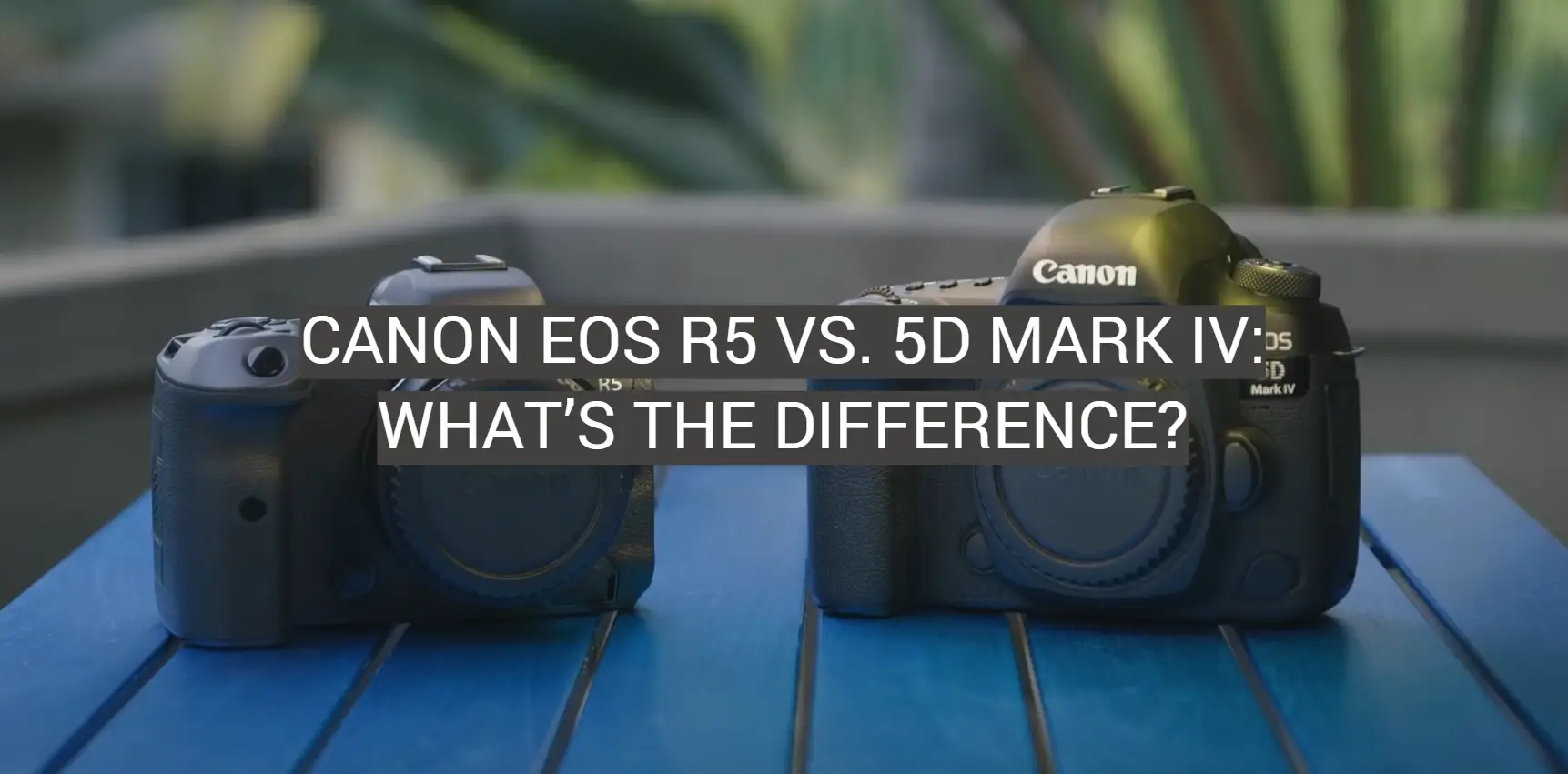
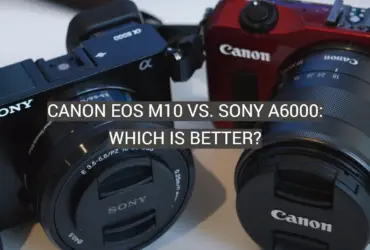
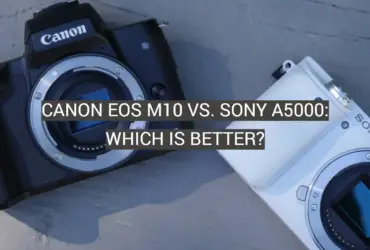
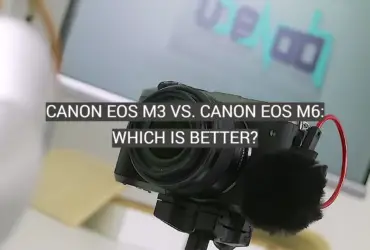
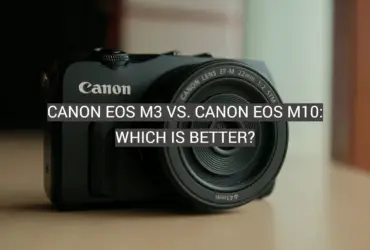
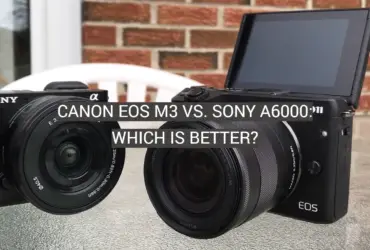
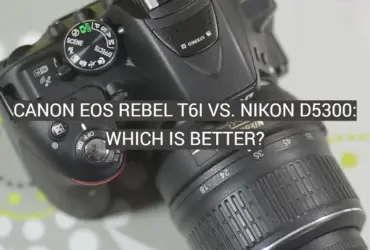
Leave a Reply